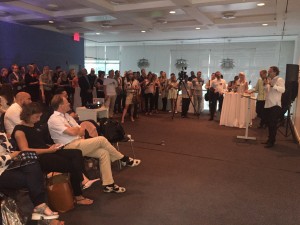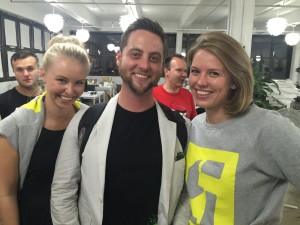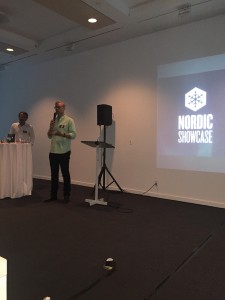As more TV is delivered over IP networks, and as more mobile viewing takes place, the synched TV-mobile experience will soon become a more enriched unit for advertisers and a fun – yes, you heard that word! – way for consumers to enjoy ads. Again.
Approximately 84% of TV viewers are dual-screeners (according to Mary Meeker KPCB Internet Trends 2014), and that figure jumped 200% since the 2012 London Olympics. More significantly, those dual-screen viewers are spending 50% of their viewing time using a second device (Millward Brown Abreaction, ‘Marketing in a Multiscreen World, 2014). During ad breaks, 67% of the audience shifts to mobile (United Internet Media, 2014).
As contextual content – user-aware; location-aware content served to individuals – increases, the synched ad solution market will rise. Solutions from the EU 2nd screen market have, so far, led the way. Paris-based Sync (a spin-off from Visiware) conducted the first such unit placement during the half-time of the 2014 FIFA World Cup Final. The perfectly synched spot, a rich animated interactive ad unit for smartphones and tablets in the app of L’Equipe (France’s top sports app, with more than 9 million downloads), highlighted the precision of Gillette razors, and included a contextual game, asking users to guess the precision of the shots during the first half, and instantly provided users with the live result. The unit, created by Sync’s patented Sync2Ad unit, which was developed by the Visiware studio, bridged the gap between TV And mobile advertising, between the brand and individual consumers. More than half of the top 20 French apps currently have installed the Sync2Ad SDK, and Sync is actively signing partnerships for Sync2Ad in other countries. The new ad format creates unique additional high-value inventory for publishers, and can be used for their own promotional purposes.

In-app advertising is far more likely to gain the attention of viewers, who are well used to blocking ads on their desktop browsers. What will likely happen is an understanding of how gamification can reward the synched ad viewer. When Yahoo! streams the NFL game between the Buffalo Bills and the Jacksonville Jaguars from London on October 25th, the worlds of TV and mobile will undoubtedly collide. It will be interesting to see how Yahoo! and its ad agency and ad network partners view this experience. And, yes, how the NFL – no stranger to the 2nd screen world – sees the synched ad experience. So far, the U.S. market has seen small steps toward synched TV-mobile ads. Xaxis launched an attempt in this field in the spring of 2014, and NBC has made in-roads with Never.no, a Norwegian 2nd screen solutions provider. But, overall, the mobile ad shift has not lived in the synched universe.

The hurdles overcome with user privacy surrounding Automatic Content Recognition (ACR) has hampered some of the progress in this arena. Also, critical mass is an issue for app publishers. Meaning, unless there is a solid audience using apps while TV spots are aired, or with devices that have apps live or open, the opportunity may be lost. This is where gamification lends itself to the experience. A synched spot needs to have true bi-directionality to really enhance the experience, where users could, in a game construct, lead to new levels of play or engagement. This is nothing that the SMS marketing world has not known for years, and has done with great success in the participatory TV genre that has included ‘American Idol,’ ‘America’s Got Talent,’ and other war horse shows that have, literally, taught the U.S. population to text.
TV as we know, and the ad units that support it, need to change just as live TV has changed radically in the past decade. When on-demand streamers such as Hulu, Amazon, and Netflix figure out how to engage viewers with synched spots, the arena will expand dramatically. And, one can only hope, create more fun for TV viewers.
Click on, people. Click on.



